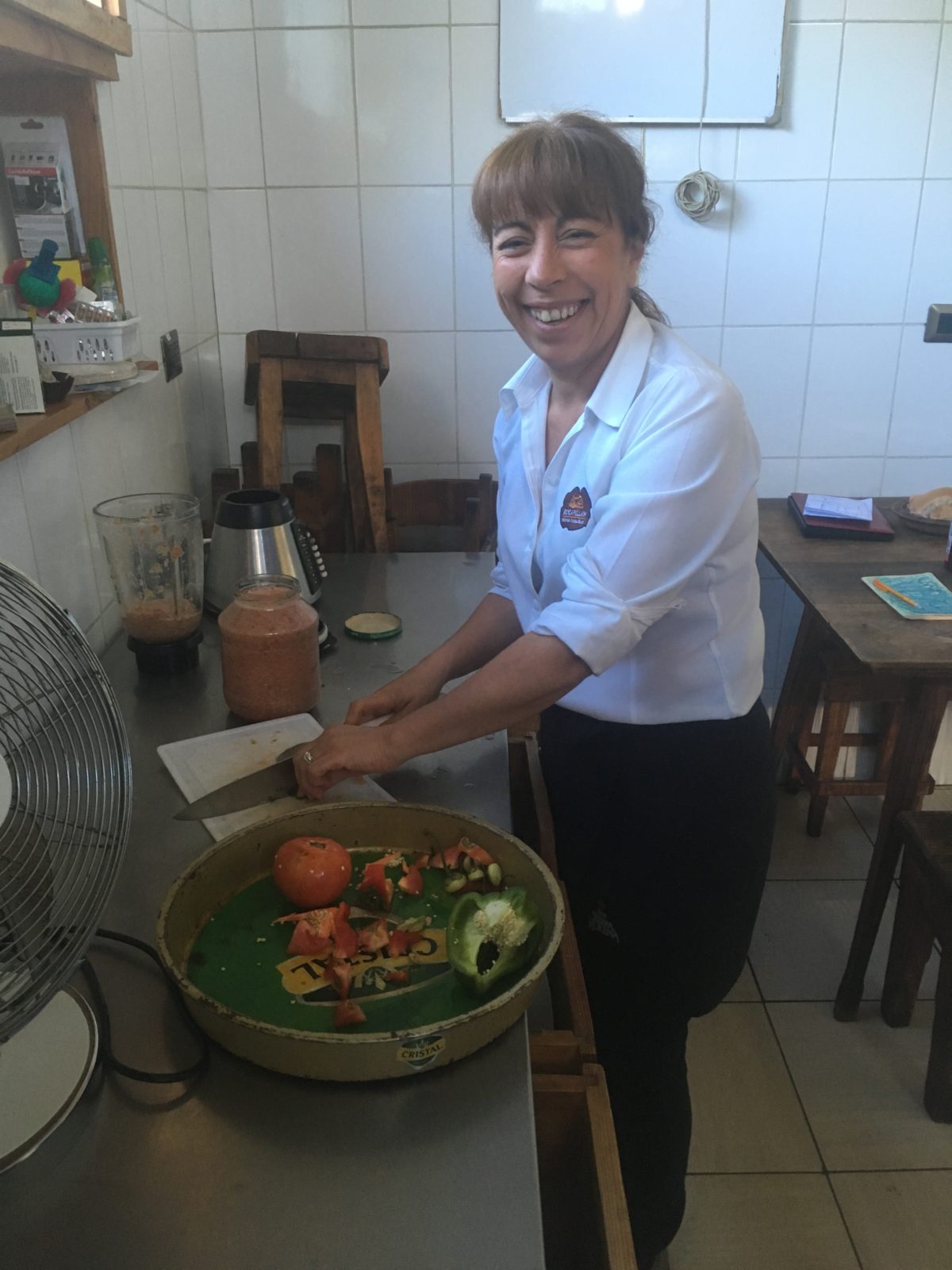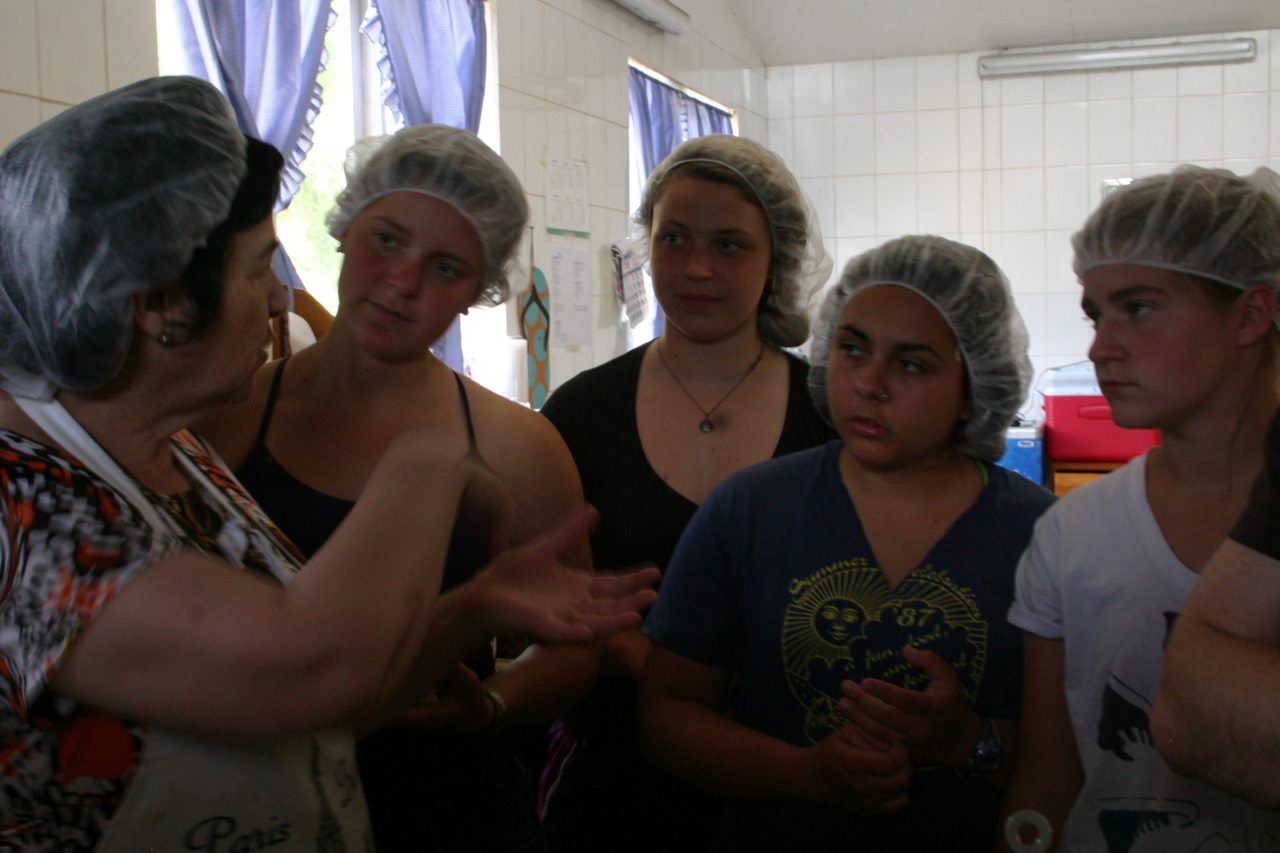Chilean Flavor – Making Pebre in Choshuenco
While in Choshuenco, we eat at a wonderful local restaurant called El Rucapillán. Though the meals are filling and flavorful, my favorite part of dinner in Choshuenco is always the pebre. Pebre is a traditional Chilean salsa, often spicy and always delicious. Each night in Choshuenco, we find a different pebre on the table. Sometimes it’s mild and bright red; other nights, garlic-filled and salmon-colored, others still, spicy and pale pink. It complements every meal wonderfully, from simple bread and butter to sausage and bean stew. Since we first arrived in Choshuenco, I’ve been determined to learn how to make it. A stilted but successful conversation with the owners of the restaurant settled the plan for Sunday evening, just before dinner.
After a sun-filled afternoon on the beach of Lago Panguipulli, Emily and Allison decided to join me on my culinary adventure. We eagerly made our way to the restaurant, where Veronica ushered us into the kitchen. She was delighted to have three new American pupils, and immediately washed and organized the ingredients: seven or eight plump tomatoes, a handful of yellow ají peppers, a couple small green hot peppers, and two bell peppers. As Veronica sliced up the vegetables, she chatted with Emily, Allison, and I about our hometowns. We discovered that Veronica has a childhood friend who lives in Emily’s home state of New Jersey, and that TV shows have led Veronica to some strange assumptions about Allison’s home state of Texas. As we learned about each others’ hometowns, Veronica tossed the ingredients into a blender with half a cup of water, and pulsed the veggies into the rose-hued salsa that we all adore. She poured the fresh salsa into a large glass jar, and as our conversation drew to a close, we thought our simple lesson might be over.

But we still needed to add salt and the critically important ingredient, cilantro. Veronica hurried off, and I assumed she would return with a handful of cilantro from the fridge. Instead, she beckoned for us to follow her. Out of the kitchen and through the laundry room, we followed her into an alcove behind the restaurant, where we found ourselves surrounded by raised beds. She bent down and plucked a few leaves off of a plant, brought them to her nose, then ours – fresh oregano!
We proceeded to follow her on a tour of the garden. Inside a small greenhouse, cucumbers and tomatoes climbed towards the ceiling and basil grew steadily; beside the greenhouse, squash and zucchini plants flowered. Veronica pointed out the herbs in the raised beds lining the restaurant wall: cilantro, oregano, a local variety of rosemary, and many more. She picked a handful of cilantro and a pinch of rosemary. We munched on a freshly plucked cucumber as she told us that the restaurant uses herbs and vegetables from their garden as much as possible – especially when they make fresh pebre.
Back in the kitchen, Veronica briskly chopped up the herbs and added them to jar. After a heaping spoonful of salt, the pebre was complete. We each tasted a small spoonful, oohing and aahing over the perfect freshness and spiciness. Veronica was delighted, and we left the restaurant a small bowl of pebre all for ourselves – as well as a great new friend!
At dinner, with bowls of our freshly prepared pebre on the table, Emily and Allison chatted with their friends about the recipe, making plans to prepare it at home for their families. “We should make it in the cabanas!” said one of their housemates. Everyone was excited to practice the new recipe, in Chile and back at home. It was a fabulous end to our weekend of paddling and roll practice, a wonderful moment of cross-cultural learning to conclude our final weekend in the Lakes District.
Written by: Angelica Calabrese

